Pair Rare John Campbell Terracotta Chinoiserie Planters circa 1900
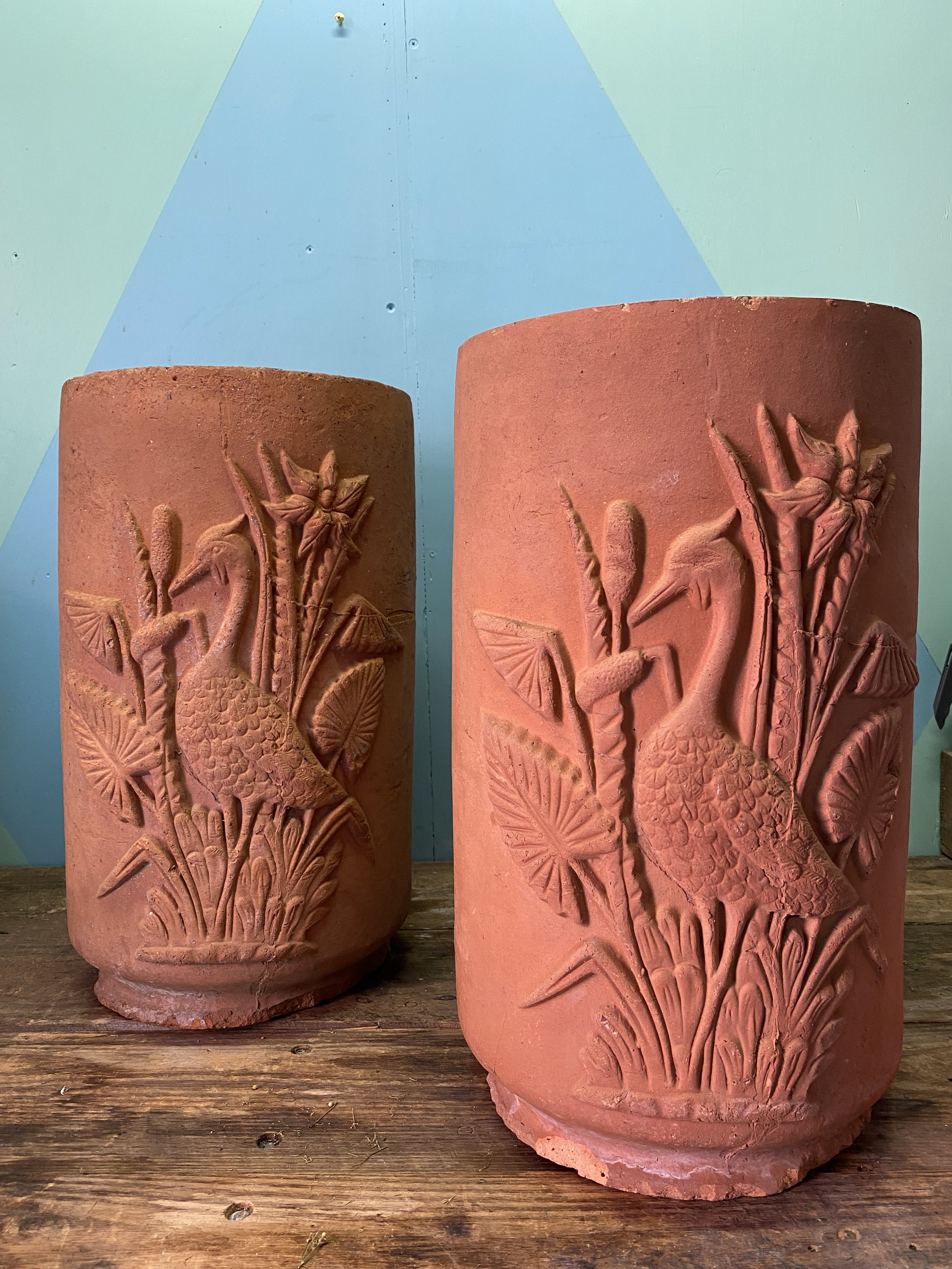
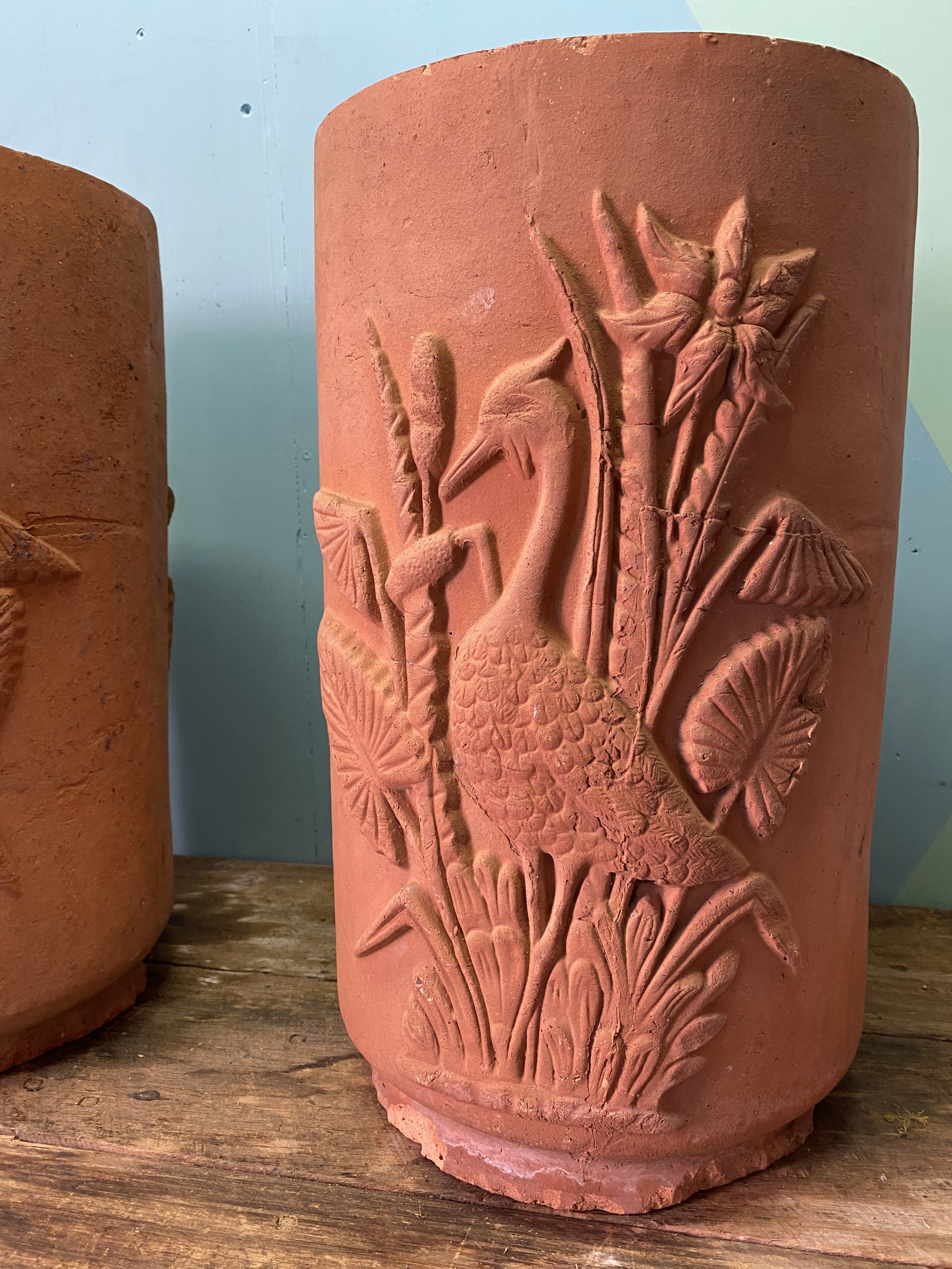

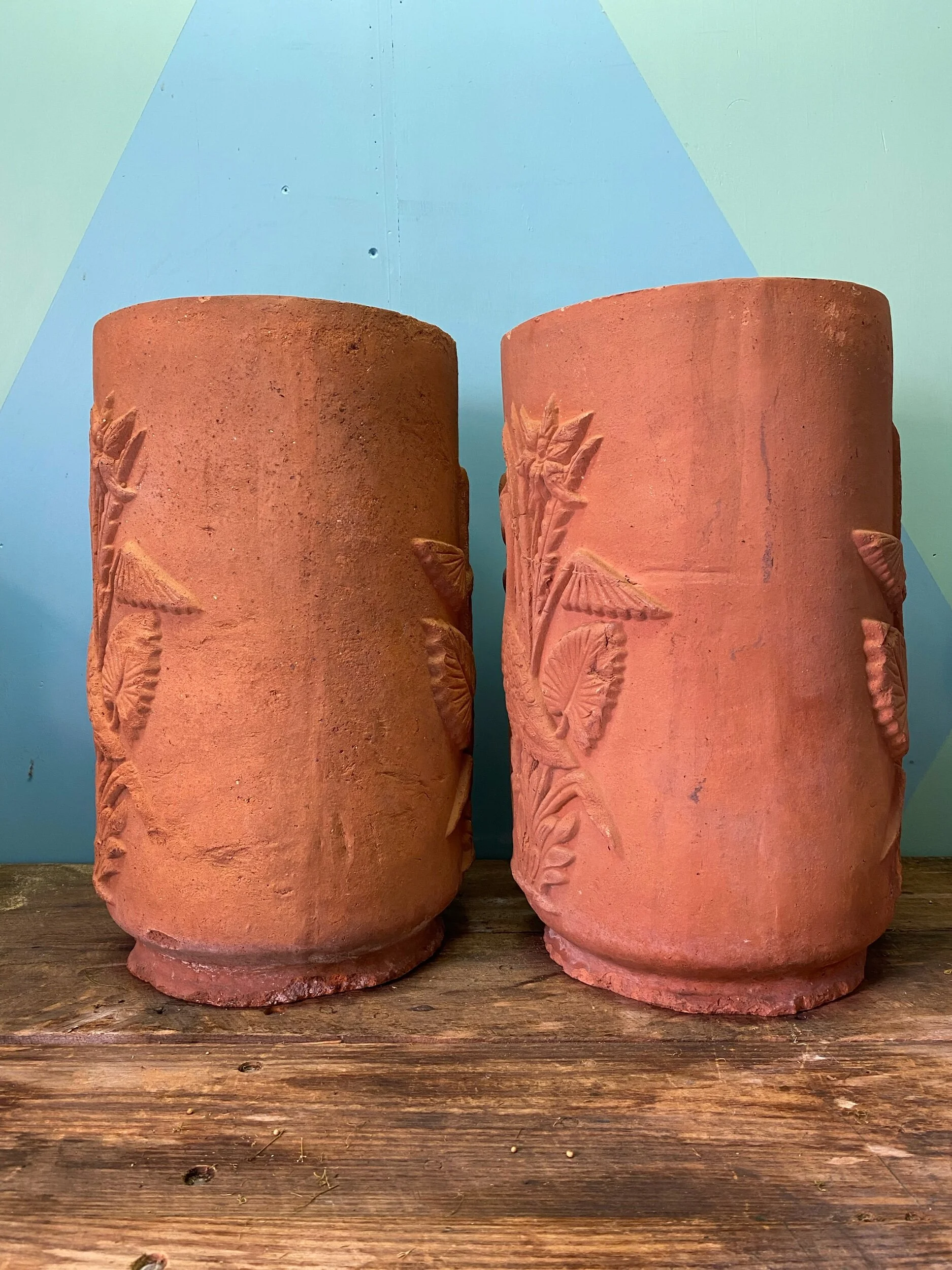
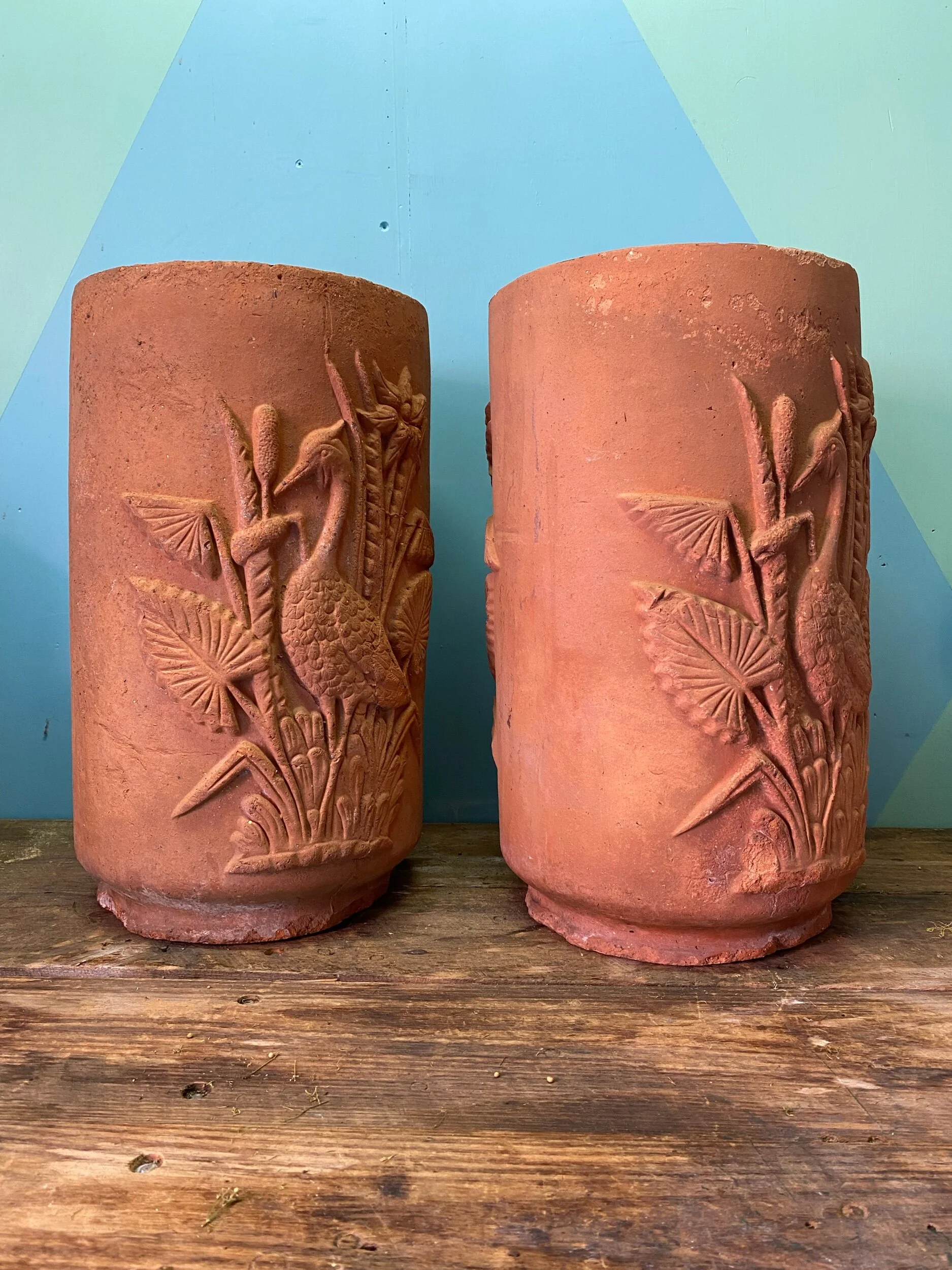
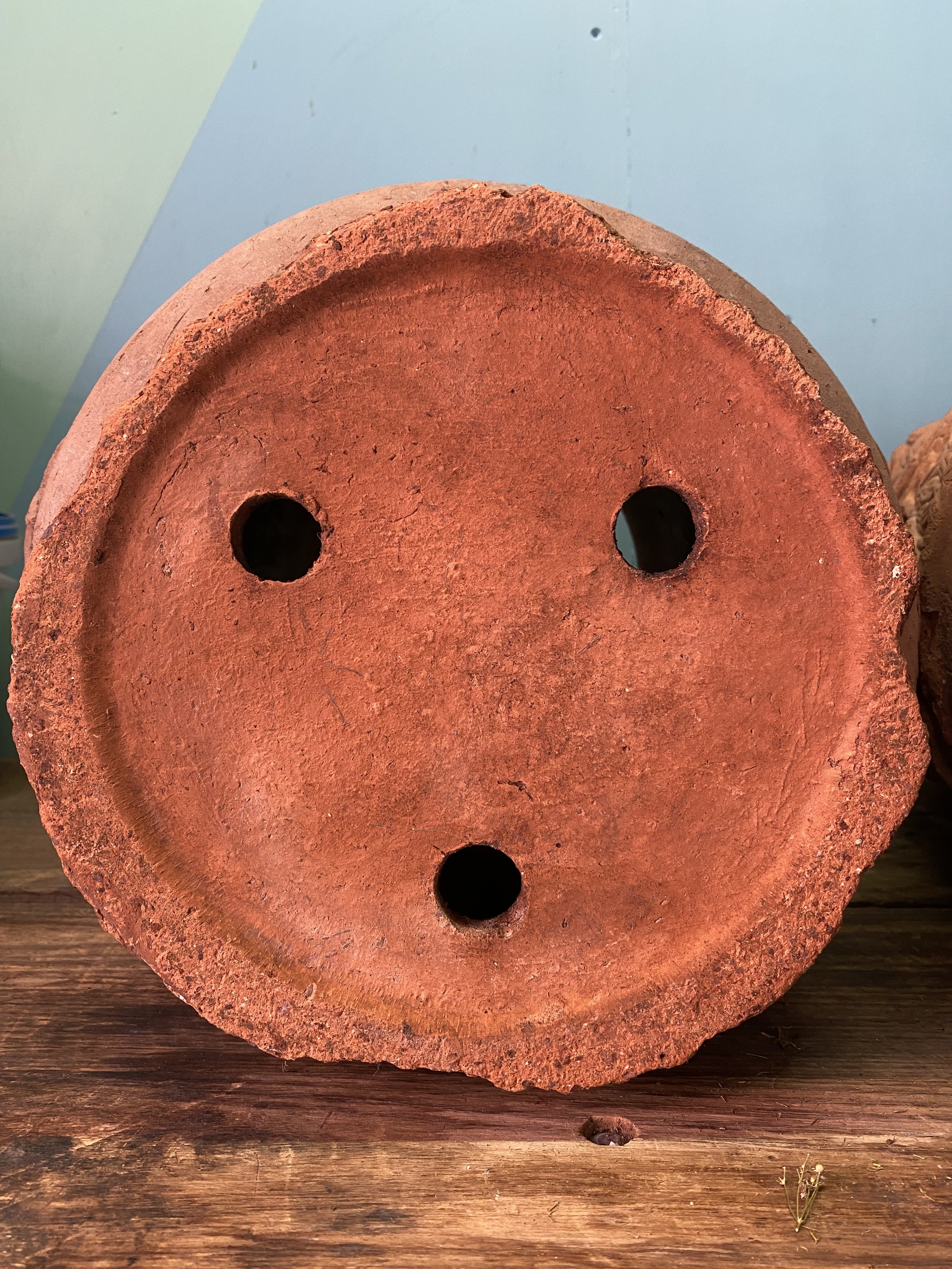
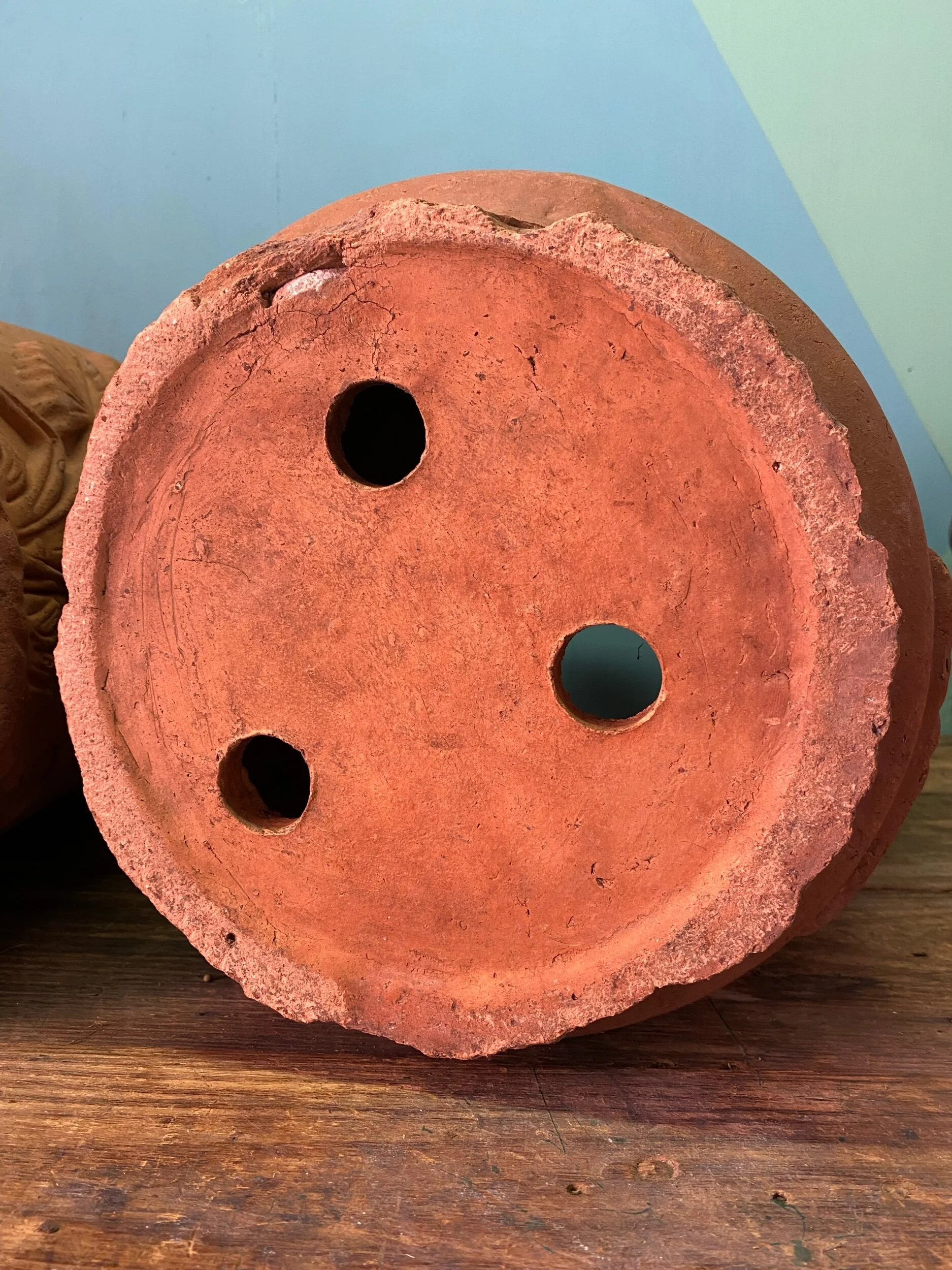
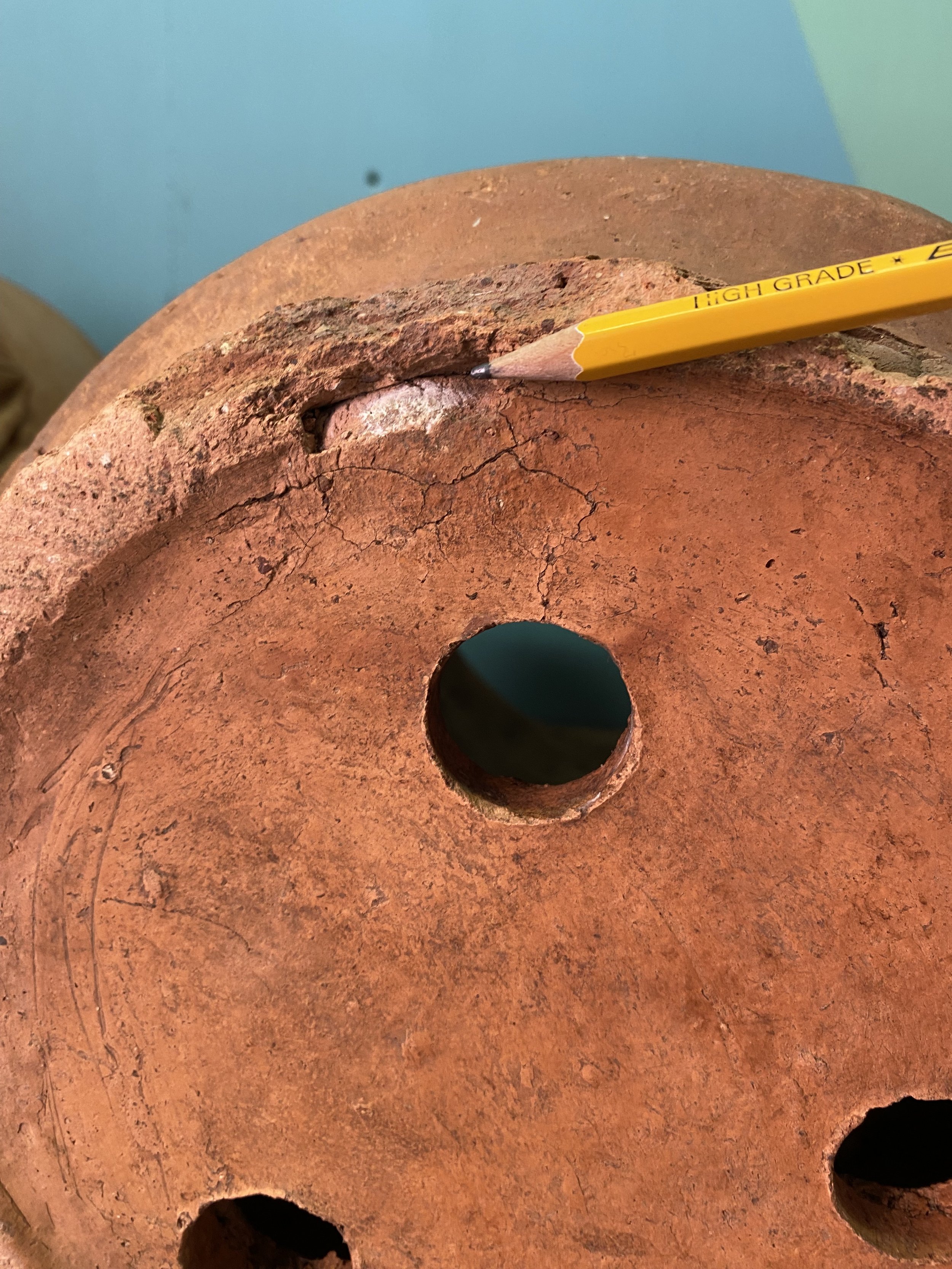
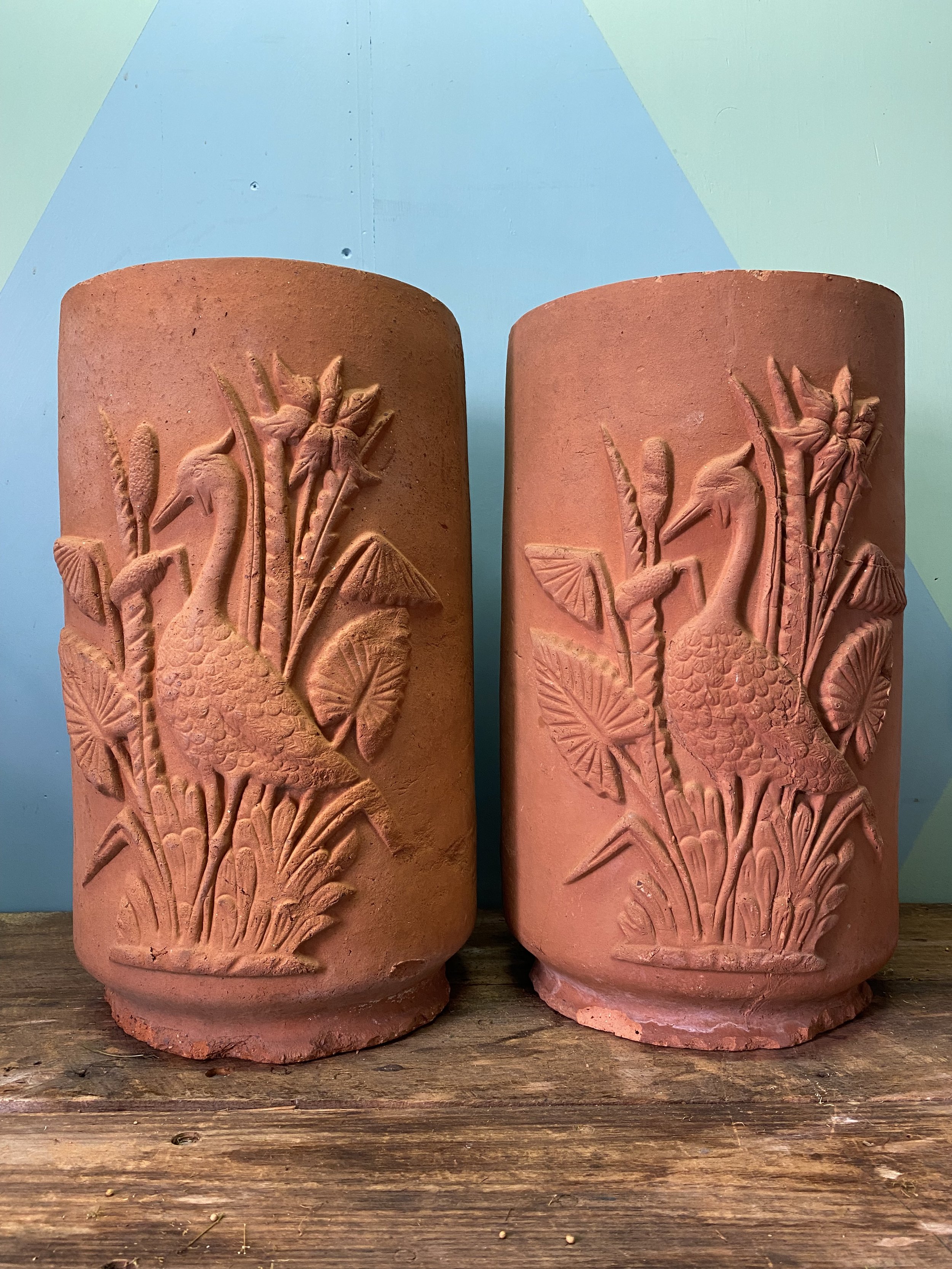
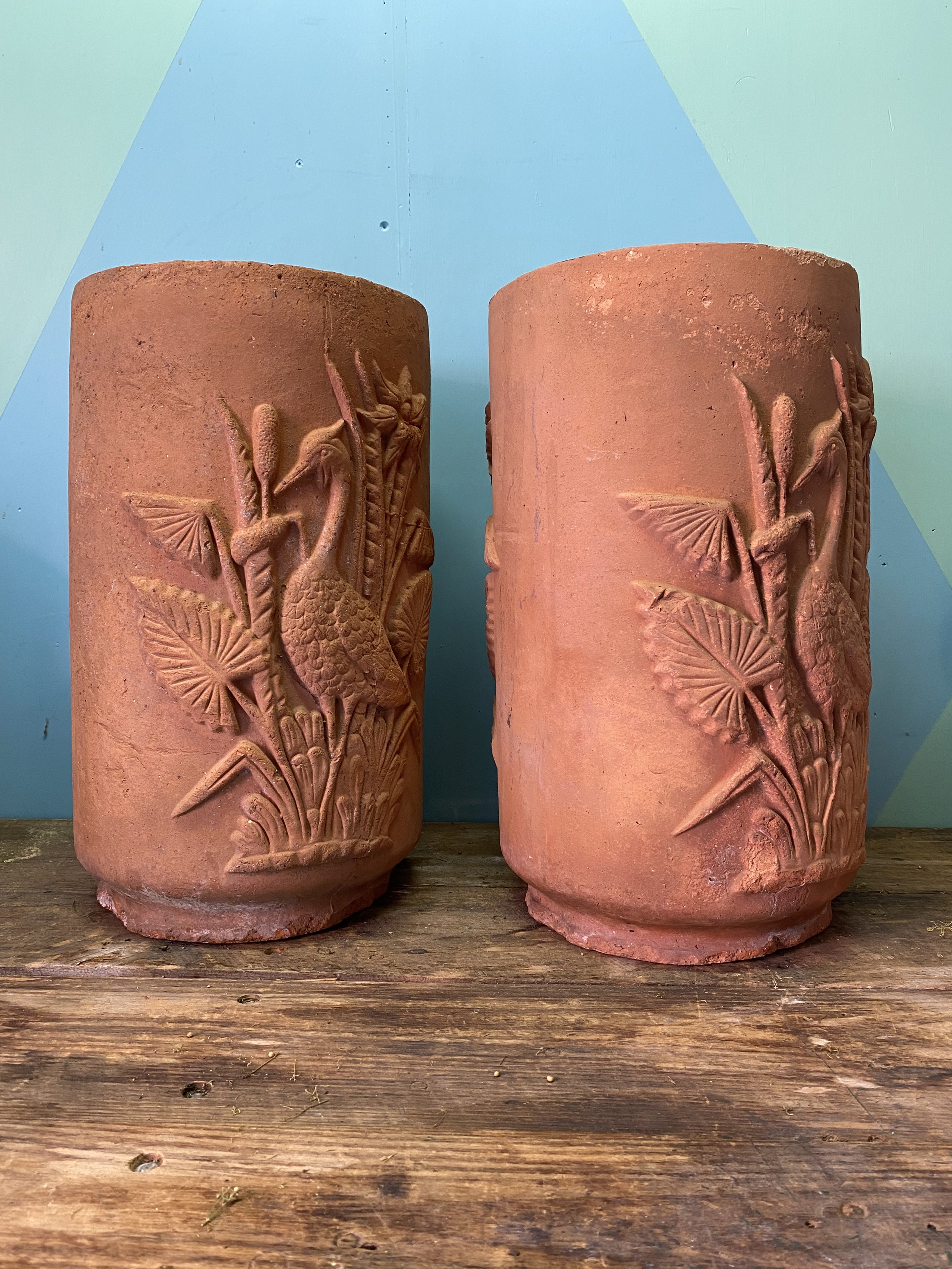
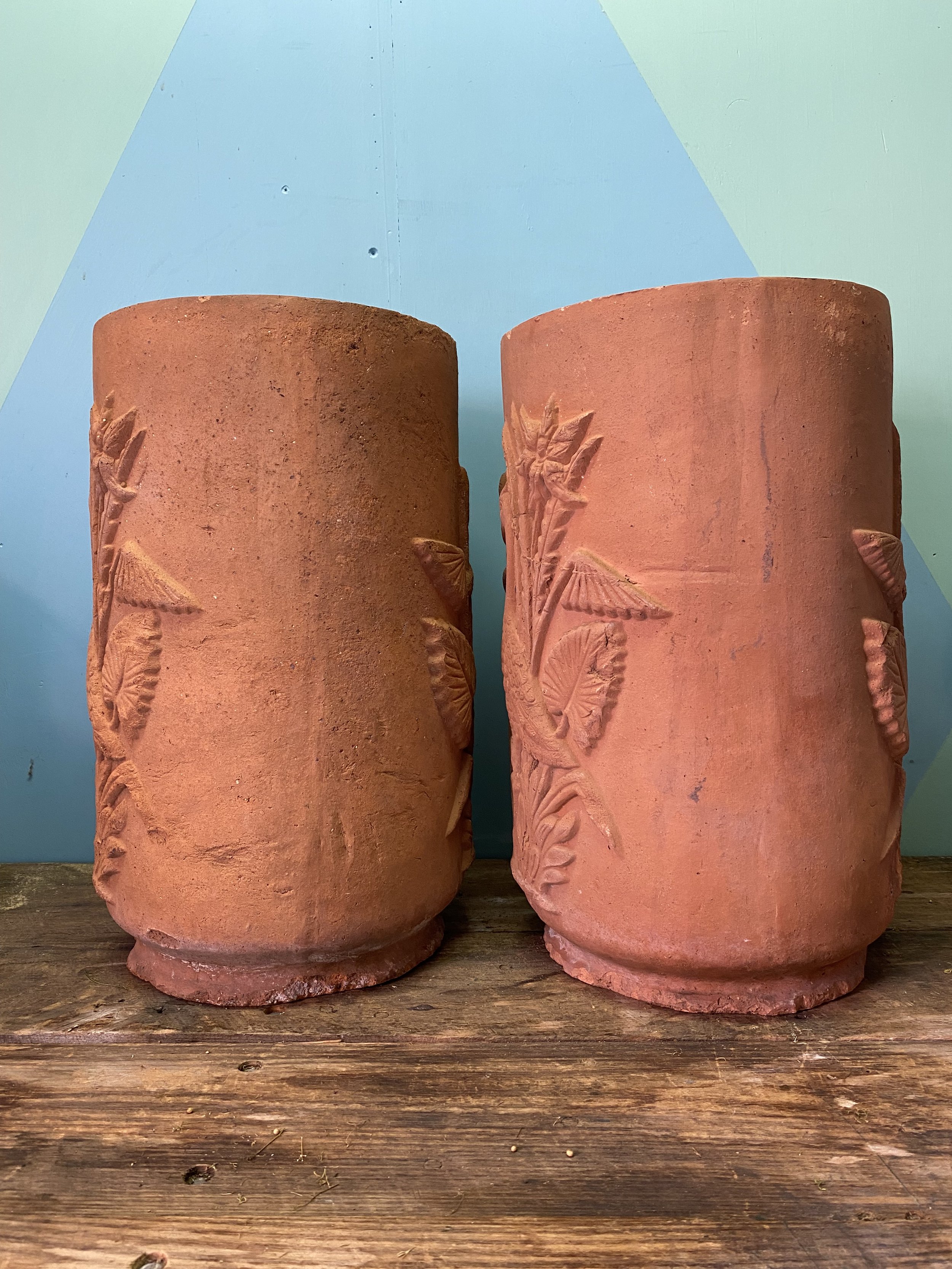
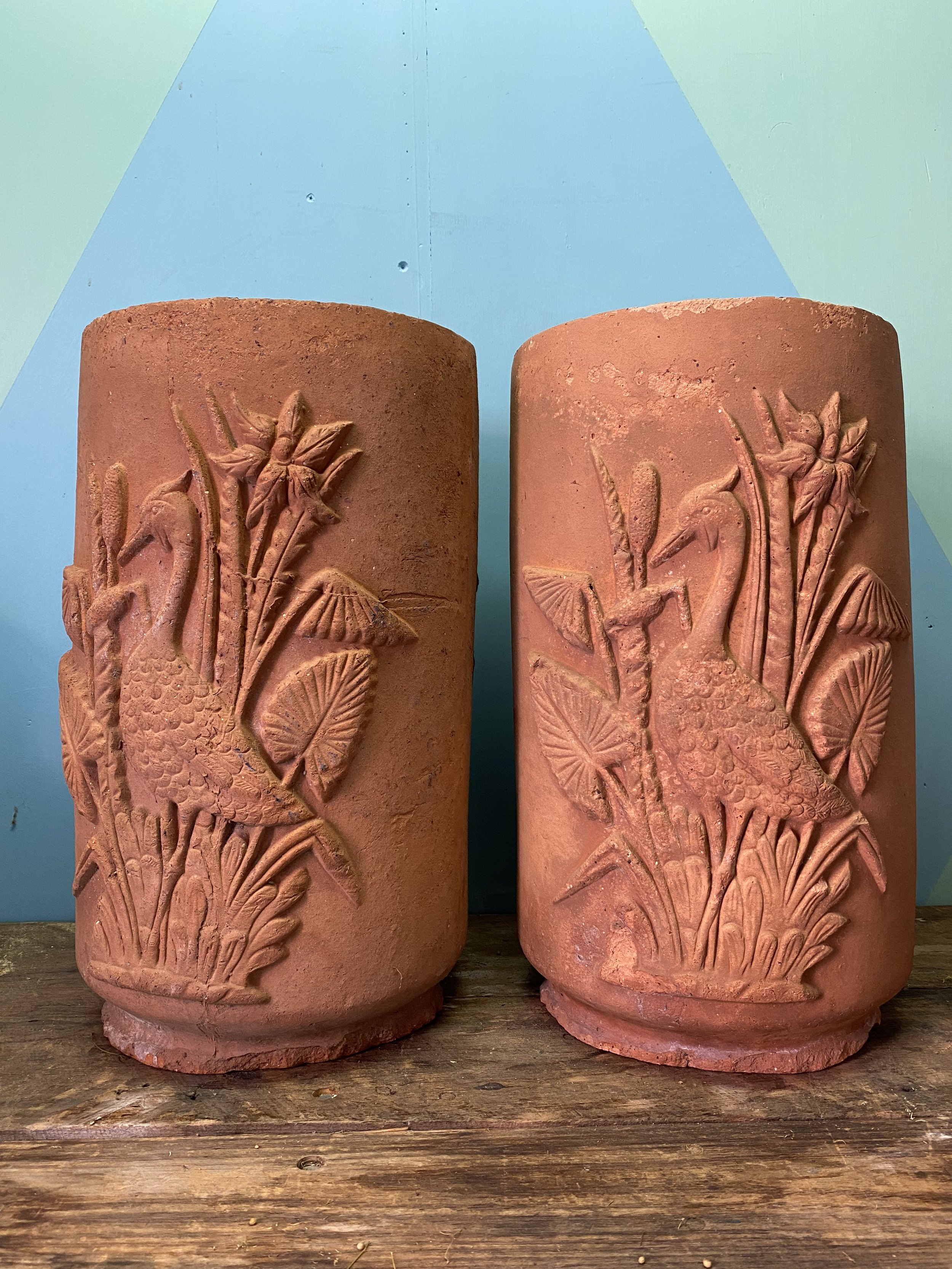
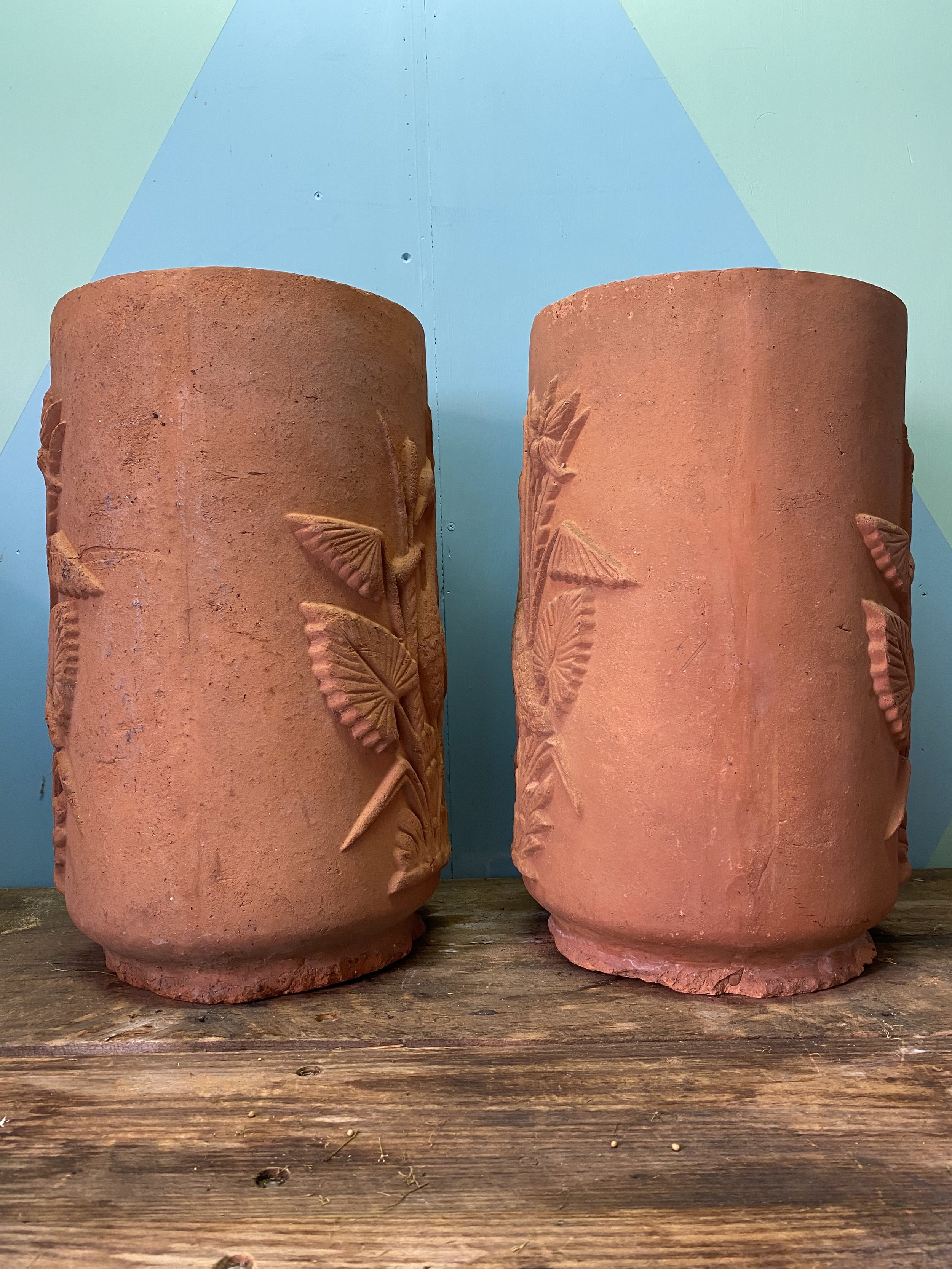
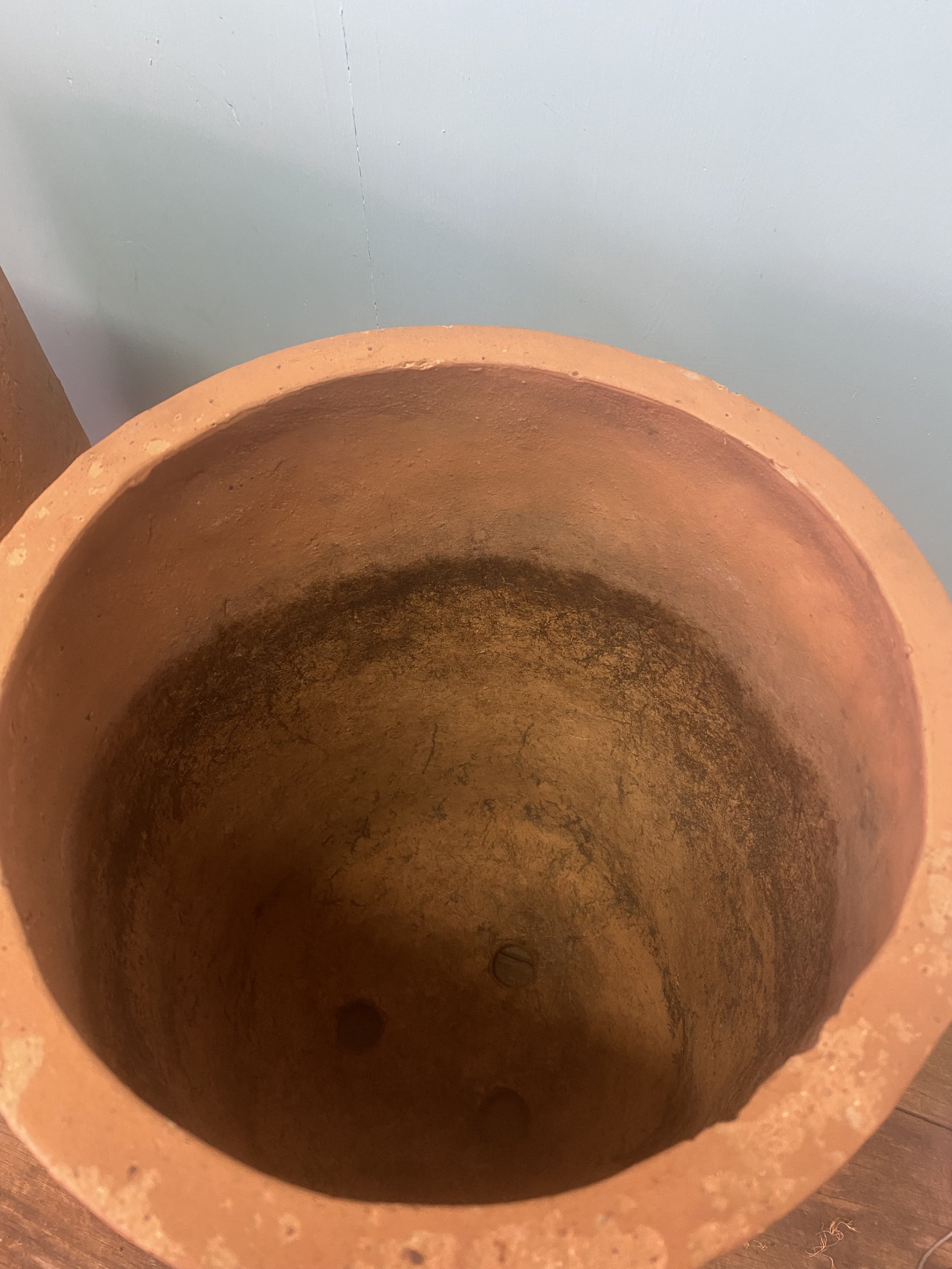
Pair Rare John Campbell Terracotta Chinoiserie Planters circa 1900
PRICE FOR PAIR
can separate the pair - please get in touch
An exceptionally rare pair of John Campbell planters. The design is attributed to John Cambell's son, Rupert John Campbell. Only one other production of this design has been seen, an umbrella stand.
John Campbell produced decorative pots at his brick works and pottery in Launceston, Tasmania from 1880 until 1975. Rupert John inherited his father's works and was a skilled artisan and potter. He developed presses for decorative pottery. This beautiful pair of jardinières likely date to the 1920-30s.
MEASURES:
52cm high x 30 cm diameter
CONDITION:
Chips to the feet of both pots, some old, some more recent. Salt florescence to exteriors. Pitting notable on the pot pictured to the right. Interiors soil stained. Used but in remarkably good condition for their age.
ADDITIONAL INFORMATION:
Provenance
This pair were passed down through three generations. The original owner gave them to her son. In the 1980s the (then elderly) son gifted them to a friend (the last owner before this sale). At the time they received them they were made aware of their age and rarity. Now, another forty years later, they are potentially the only pair in existence.
Only one similar John Campbell un-glazed terracotta 'umbrella stand' can be found on record. It was sold in 2008 in Tasmania, at a 'Fine Colonial Decorative Arts' auction run by Mossgreen Auctions, a reputable auction house, though since closed. I can find no other reference to this model, except an acknowledgement of the existence of an un-glazed terracotta umbrella stand, in the definitive record of Campbell's work by Kevin Power, 'John Campbell Pottery: Recollections and Collections' published 2014.
These are of the same design and size but were manufactured with drainage holes in the base. They were decorated using a press, with clay slabs pushed into the press by hand. The interior of each pot shows the marks of hammers and hands used to force the clay into the face of the press pattern. They have a hand-crafted appearance, with hand finished mould lines to each side and there are pressing faults such as folds apparent in various areas of the pattern.
Tasmanian pottery
Tasmania was notably independent in production of most household goods, due to the isolation of the colony right up until the turn of the 19th century. Being at the farthest reaches of the British Empire, settled as a penal colony, with a relatively low consumer population, it was not a market for the high-volume import of domestic goods.
As a consequence, household wares and decorative pieces produced in Tasmania through the 19th century represent a wholly independent category of Australian colonial design, production and craft. These pots are highly collectable and scarce artifacts of one of Tasmania’s earliest industries.
In aesthetic terms, many Tasmanian artifacts are notable for following British, Georgian and Victorian fashions but with a colonial character of their own devising. Local characteristics became a stronger feature of Tasmanian decoration over time. Note the classical Georgian/Victorian chinoiserie motif of a bird foraging among rushes. In this case, the local interpretation depicts a Brolga (the largest Australian wetland bird) foraging amongst native Australian reeds and water lilies.
Another of the things that sets early Tasmanian artifacts apart is the way in which necessity forced artistic production in pottery to be less refined than that of their British counterparts. A broad range of products had to be produced to meet local requirements, often by a single producer.
John Campbell’s pottery is a great example of this practical necessity. It produced everything from industrial drainage pipes and bricks to household pottery and decorative items, all from a relatively small family run factory. Their domestic wares were so well trusted and appreciated that they by the 1940s they made their way all over the mainland of Australia.
Under these circumstances, the refinement of decorative technique was not as great a priority as utility, consistent quality of production and durability. As a consequence, Australian colonial works and their early 20th century descendants such as these pots, are hugely appealing. They have an idiosyncratic and vernacular appearance, with British and European stylistic trends of their day overlaying a base of inventiveness, local interpretation and sturdy functionality.
We hope you can appreciate the rarity and significance of this well-preserved pair of planter pots (or can be used as umbrella stands). They can be counted amongst Tasmania’s most significant and collectable domestic decorative pottery.
They are particularly deserving of preservation in an Australian collection, so we are offering free delivery anywhere in Australia.